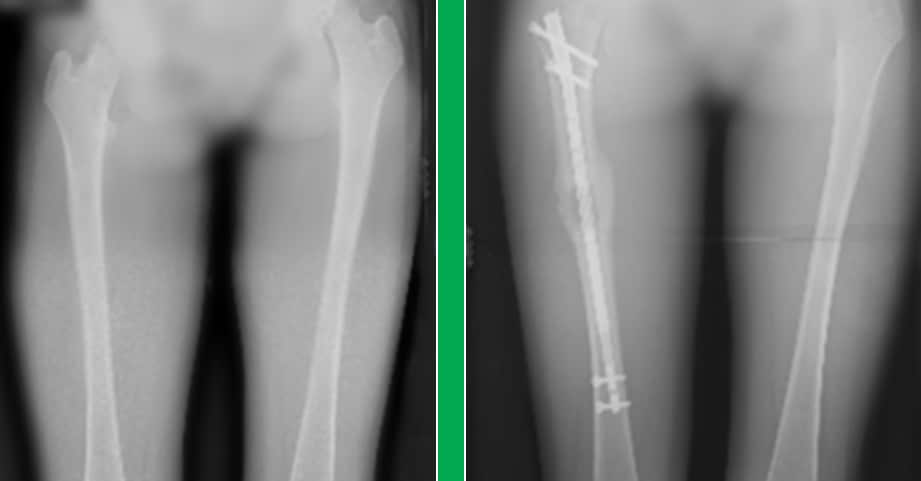Internal Lengthening Nails
Internal lengthening nails are implants that are placed inside a bone that help make the bone longer. During surgery, the surgeon carefully breaks the bone in a controlled manner and inserts the nail. After surgery, a magnet or receiver is used outside of the body to move the mechanics inside the nail, which expands the nail and lengthens the bone. Generally, internal lengthening nails are easier on daily life for patients than external fixators.
The motorized internal lengthening nail has revolutionized limb lengthening surgery over the last decade. Our limb difference team is well versed in this technology and is one of the busiest limb lengthening centers in the southeast.
What are the benefits of internal lengthening nails?
Compared to an external fixator, there are numerous benefits to using an internal lengthening nail, including:
- Less pain: Lengthening with an internal lengthening nail is less painful than lengthening a limb with an external fixator. This is because there are no pins and wires, which often become infected and can cause pain.
- Less scarring: With an external fixator, pins and wires are placed through the skin. The holes for the pins and wires stay open the entire time, and when the fixator is removed, scars can form over the holes. This is not an issue with internal lengthening nails.
- Better range of motion: Since there are no pins that are going through muscle, a child has better range of motion. A nail is also less likely to cause stiffness, meaning your child will be much more likely to reach his lengthening goal.
- Easier to wear clothing
Each child’s needs are unique. At Children’s Healthcare of Atlanta, our pediatric-trained team will work closely with your family to help decide whether your child should have internal lengthening nails and to create an individualized treatment plan for your child. Our surgeons are experienced in limb lengthening procedures using internal nails, such as Precice nail, Stryde nail or FITBONE nail.
Reasons your child may not be a good candidate for this type of lengthening procedure may include:
- Size of the bone: If your child’s bone is too narrow or too short, the nail cannot be used because it will not be small enough to fit. Typically, internal nails can be used once your child is about 9 or 10 years old.
- Skeletal maturity: For lengthening the tibia bone with an internal nail, your child needs to be either fully grown or almost fully grown. This is because the nail goes through the growth plate of the top portion of the tibia bone. In the femur, a nail can sometimes be placed through the top of the bone before your child is fully grown as long as he has a bone that is big enough. However, there are times when your doctor may prefer to place the nail through the knee joint and into the bottom of the femur bone. In that case, another major growth area is affected. We typically wait until your child is almost fully grown before using internal lengthening nails.
- Severe deformity: If your child has a crooked bone, in addition to a difference in limb length, lengthening with an internal nail may not be possible. The nails are not designed to hold the crooked bone straight and lengthen at the same time. However, if the deformity is mild and in the correct location, the bone can sometimes be straightened and lengthened with one surgery.
What does an internal lengthening nail look like?

Contact Us 404-255-1933

